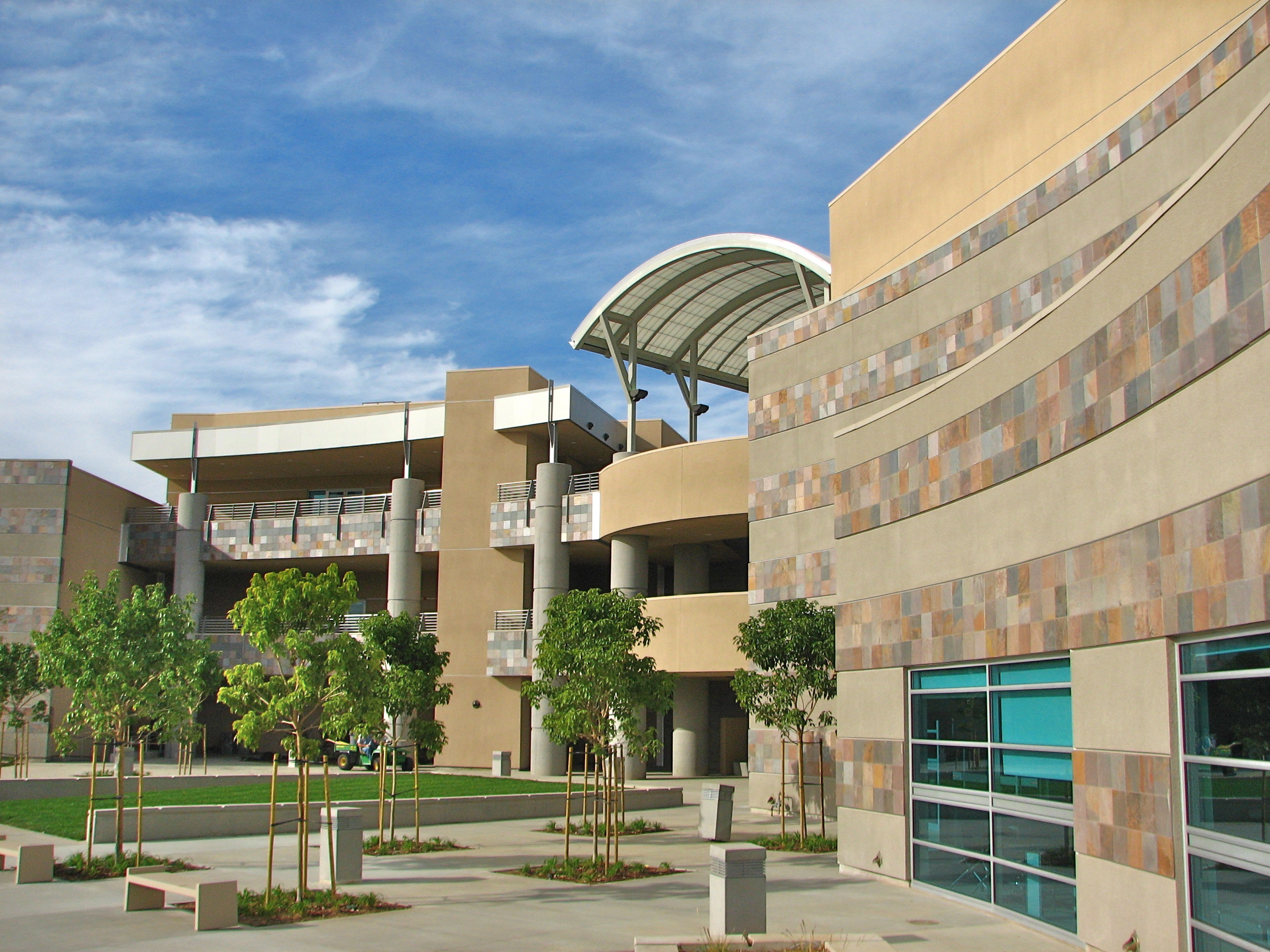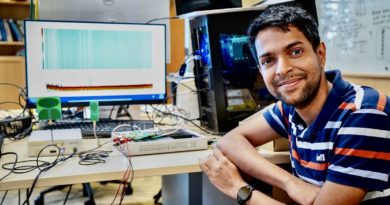Daily Business Report-Aug. 31, 2016
Petco Park (Courtesy of the San Diego Padres)
Sensors and Software
Are Cutting Costs At Petco Park
By Martha DeGrasse | RCR Wireless
San Diego’s Petco Park expects to cut operating expenses by 25 percent over the next five years, thanks to real-time monitoring of its energy and water use. The park is not installing new pumps or meters, instead adding sensors and gateways to its current infrastructure to create a smart stadium.
“We can see exactly how much water, power and gas each operation uses ballpark-wide, and can work with our operators and tenants to manage usage and increase the reliability and overall performance of the venue,” said Randy McWilliams, senior director, facility services for the San Diego Padres.
The system is expected to slash expenses by enabling the facility to anticipate and prevent power outages, pump failures and turbine failures, and to monitor the resource use of each vendor in the stadium. Gateways powered by Qualcomm’s Snapdragon processors collect data from stadium infrastructure systems and stream it over both wired and wireless networks to software developed by Qualcomm partner OSIsoft. The system accepts both analog and digital inputs and supports multiple communication protocols.
For Qualcomm, turning its hometown of San Diego into a smart city would be a home run, and the chipmaker has already made it to first base by connecting Petco Park.
Smart city game plan
Qualcomm Intelligent Solutions President Kiva Allgood said the system her company has developed with OSIsoft could be used for almost any multidwelling unit, or for multitenant office buildings. She said Qualcomm has already implemented similar systems across its own campuses.
“We’ve been able to actually make bold statements within our own sustainability goals because now we have the data in a finite enough fashion that it is actionable,” she said. “So instead of it just being for metering for a bill at the end of the month, we’re actually able to see, based off of the information coming off the equipment, what types of things we need to do during the month to be able to either prevent an accident or improve efficiency. So that same type of concept we’re able to apply really to any currently built building.”
Adding smart systems to existing buildings is a much more scalable approach to smart city development than building new “smart buildings.” Qualcomm sees the combination of sensors, gateways and software as a way to bring the “internet of things” to municipalities in an affordable way.
“Qualcomm Intelligent Solutions’ approach to creating smarter cities starts with repurposing existing infrastructure, including existing water and gas systems installed in facilities such as Petco Park and other large event venues,” said Allgood.
Allgood knows that connecting one ballpark is less complex than connecting an entire city, but OSIsoft has a proven track record with customers that collect data from multiple locations. The software company said one of its customers, Excel Energy, has saved $46 million over the past six years. OSIsoft sees smart cities as a logical market for its data collection platform.
“The foundation of the smart city is data,” said Martin Otterson, SVP of sales, marketing and industry at OSIsoft. Otterson hopes that a home run at Petco Park will start conversations with other ballparks in other cities.
“There are approximately 12,000 stadiums in the world, and many are in regions and cities mapping out plans to use energy and water in smarter ways,” he said. The challenge will be bringing together each city’s disparate stakeholders in pursuit of a common set of solutions.
“On average a city has about 40 different planning departments,” said Qualcomm’s Allgood. “But I would say we’re starting to see a transformation in how they think about that infrastructure and its engagement with the citizens in a different way.” Allgood said she is encouraged by a federal grant from the Department of Transportation and the Department of Energy that is focused on “gaining insight and improving the performance of the current infrastructure, … a testament to the fact that people are starting to recognize they’re going to have to use technology in a different way.”
The above article is from RCR Wireless.
Martha DeGrasse has been creating content for RCR Wireless News since 2011. Her current focus areas are wireless infrastructure and heterogeneous networks. Email: mdegrasse@ardenopco.com
______________________________________
2nd Quarter VC Report
San Diego-Based Human Longevity
Receives Largest Biotech Venture
Capital Investment in the U.S.
Human Longevity, a genomics-based biotech company in San Diego, attracted $220 million in venture capital investment in the second quarter of this year — the largest biotech deal and the third largest overall VC deal in the United States for the quarter, behind Uber and Snapchat.
That’s according to data from PwC MoneyTree, National Venture Capital Association and Mattermark.
Biotech investment led all industry types in the second quarter with $233 million, with Human Longevity accounting for 94.4 percent.
According to the VC report, total venture capital investment in San Diego firms increased to $388.9 million in the second quarter of this year, a rise of 7.6 percent from the first quarter. Deal volume was 21, the fewest since the second quarter of 2013.
Software investment in San Diego was the next highest behind biotech with eight deals totaling $72.4 million. This was almost $31 million higher than the previous four-quarter average. The largest software deal in the second quarter was Seismic Software, which received almost $40 million.
An unusually low volume of medical device deals (3) were done with San Diego companies in the quarter, with dollar volume reaching only $25 million. This is 35 percent lower than the quarterly average, which is typically around $38 million.
Health IT remained evident among the software industry, though VC investments remain small. Liquid Grids, which provides IT and marketing platform solutions for the health care industry, received $429,000 in funding after receiving $270,000 in the first quarter. AristaMD, a referral intelligence program aimed at improving the specialty referral process, received $5 million.
M & A Activity
- San Diego-based Sequenom is being acquired for $371 million by LabCorp, a leading health care diagnostics company. Sequenom, which specializes in genetic and prenatal testing, employs over 400 people and is headquartered in Torrey Pines Science Center.
- M&M Plastics, a plastics fabrication shop, was acquired by Curbell Plastics, a large New York-based plastic supplier. Through this acquisition, Curbell gained a full-service West Coast fabrication shop which is located at Trade Place Commerce Center in Miramar.
- Sector 9, a leading skateboard brand which also produces surfboards and snowboards, was purchased by Bravo Sports. Based in Santa Fe Springs, Bravo owns almost 20 brands and produces a variety of sporting goods. it is owned by Los Angeles-based private equity firm, Transom Capital.
______________________________________

Oceanside’s Old Grove Marketplace
Sold to Investment Group for $23.25 Million
The Old Grove Marketplace, an 81,279-square-foot retail center in Oceanside, has sold for $23.25 million. The buyer is InvenTrust Properties Corp. Gerrity Group was the seller.
Old Grove Marketplace is 91.1 percent leased to anchor Ralph’s Marketplace and a variety of national and regional tenants, including U.S. Bank, Starbucks, Pick Up Stix, H&R Block, Oceanside Family Dentistry and AT&T.
Completed in 2005, the four-building center is situated on 8.65 acres at 101, 125, 165 and 175 Old Grove Road at the intersection of Highway 76 and Old Grove Road.
Holliday Fenoglio Fowler L.P. marketed the property on behalf of the seller.
______________________________________

Cuyamaca College Awarded $2.6 Million
Grant to Raise Hispanic Achievement
Hispanic students at Cuyamaca College will soon see a significant boost in efforts aimed at guiding them toward obtaining certificates and degrees and transferring to four-year colleges and universities, thanks to a nearly $2.6-million, five-year federal grant.
The grant is funded through the U.S. Department of Education’s Developing Hispanic-Serving Institutions Program, a program assisting Hispanic Serving Institutions such as Cuyamaca College to expand educational opportunities and improve academic achievement.
Hispanic Serving Institutions are colleges or universities where Hispanics make up at least 25 percent of the school’s students and that have adopted strategies to help first-generation, low-income Latino students. Nearly one in three of the 9,000 students at Cuyamaca College are Latino.
“It is exciting for the college to implement this kind of grant and these kind of programs that will greatly benefit our students,” said Scott Thayer, Cuyamaca College’s vice president of student services. “Cuyamaca College is committed to doing everything possible to make sure our students succeed.”
The grant will fund a new program dubbed The Pathway Academy, a student success effort. The Pathway Academy is intended to help close the achievement gap between Hispanic students and other groups. The rate at which Hispanic students complete their courses at Cuyamaca College is 38.7 percent, 10 percent lower than the completion rate of other students.
The effectiveness of the program will be measured through increased persistence, course completion, remedial progress rates and the numbers of students earning degrees and certificates and transferring to four-year colleges and universities.
Thayer noted that the Pathway Academy builds upon a number of related efforts at Cuyamaca College that have been implemented in recent years, including the First Year Experience, a comprehensive program designed to assist and guide students through their first year in college.
In September 2015, Grossmont College received a similar five-year federal grant for $2.62 million to fund a program aimed at helping Hispanic students succeed. The grant funds are being used to develop a program called Via Rápida, which assists with outreach, assessment and accelerated programs for Hispanic students.
______________________________________

Financing Arranged for Construction
Of Stone Creek Casitas in Chula Vista
Fident Capital, a real estate investment bank, announced the joint venture equity financing of $7.1 million for the construction of Stone Creek Casitas in Chula Vista. The equity offset a $15.4 million non-recourse construction loan from a national banking source.
Stone Creek is a five-acre site located in the western region of South Bay. The 97-unit, garden style multi-family project will be located at 3875 Main St.
The building by La Terra Development will feature units ranging from 750 to 1,000 square feet with one-and two bedrooms renting from $1,500 to $2,000/month. Each unit includes air conditioning, in-unit washer/dryer, and dishwasher and many units have patios. Property amenities include a pool, clubhouse, BBQ, picnic areas, and guest parking. A protected creek runs through the property, which will be enhanced with a walking bridge to embellish the “stone creek” concept. The first release of units is estimated in late-2017.
______________________________________
Air Force to Accept More Enlisted Airmen
On the Global Hawk Training Program
ExecutiveGov
The U.S. Air Force has employed a phased approach to implement changes that would allow more active-duty enlisted airmen to apply for the service branch’s training program on a Northrop Grumman-developed remotely piloted aircraft.
Sgt. Kimberly Pollard, RPA enlisted specialty manager, noted the RQ-4 Global Hawk RPA program has expanded the eligibility pool from only career-enlisted aviators to include all Air Force specialty codes and set a revised timeline for examinations, the Air Force said Monday.
Pollard said airmen will have an extended preparation time to complete flight physicals and prepare for the computer-based Air Force Enlisted Pilot Qualifying Test and the Test of Basic Aviation Skills scheduled from Sept. 1 to Oct. 14.
The Air Force Personnel Center will announce a pool of up to 300 candidates based on test scores who can move to the second phase of the application for the RPA program.
The results of the inaugural enlisted RPA pilot selection board will be released in late February 2017.
______________________________________
UCSD Researchers Identify Neural Factors
That Predict Teen Alcohol Consumption
By City News Service
Researchers at the UC San Diego School of Medicine reported Tuesday that they have identified 34 neural factors that predict adolescent alcohol consumption, which could identify at-risk youth before they start drinking heavily.
According to the study, published in the American Journal of Psychiatry, the list was based on algorithms analyzing data from neuropsychological testing and neuroimaging studies.
“Underage alcohol consumption is a significant problem in this country,” said psychiatry professor and senior study author Susan Tapert.
“Being able to identify at-risk children before they begin drinking heavily has immense clinical and public health implications,” Tapert said. “Our findings provide evidence that it’s possible to predict which adolescents are most likely to begin drinking heavily by age 18.”
A mix of social, psychological and biological mechanisms are believed to contribute to alcohol use during adolescence, the researchers said. Demographic risk factors include being male, having higher levels of psychological problems and associating positive outcomes with alcohol — like having fun while drinking.
In the study, 137 subjects between the ages of 12 and 14 — of whom 97 percent had never tried alcohol — underwent a battery of neuropsychological tests and functional magnetic resonance imaging of their brains. They were then assessed annually.
By age 18, just over half of the youths were found to be moderate to heavy users of alcohol, based on drinking frequency and quantity, and the rest continued to abstain.
The scientists employed a machine-learning algorithm known as “random forests” to develop a predictive model. Random forest classification is capable of accommodating large sets of variables while using smaller study samples to produce consistently strong predictions.
Among the findings, 12- to 14-year-olds were more likely to begin drinking by age 18 if they:
— were male and/or came from a higher socioeconomic background;
— reported dating, displayed behaviors like lying or cheating, and believed alcohol would benefit them in social settings;
— performed poorly on executive function tests; and
— had neuroimaging results that indicated thinner cortices — the outer layer of neural tissue covering the brain.
The authors said neuroimaging significantly increased predictive accuracy, compared to using demographics alone.
They said the study did not extend to the early use of marijuana because only 15 percent of the sample reported eventually using marijuana more than 30 times, but the authors said it was possible that the reported risk factors for alcohol use also apply to cannabis and other illicit substances.
They said further and larger studies are necessary.
“The value of this particular study is that it provides a documented path for other researchers to follow, to replicate and expand upon our findings,” Tapert said. “Ultimately, of course, the goal is to have a final, validated model that physicians and others can use to predict adolescent alcohol use and prevent it.”
Researchers from the Medical University of South Carolina, Stanford University, the VA San Diego Healthcare System and the Laureate Institute for Brain Research in Tulsa, Oklahoma, also took part in the study.
Funding was provided by, in part, the National Institute on Alcohol Abuse and Alcoholism and the National Institute on Drug Abuse.
______________________________________

SeaWorld to Begin Work
On ‘Ocean Explorer’ Attraction
By City News Service
SeaWorld San Diego is scheduled to break ground today on a multimillion-dollar attraction that park officials say will take visitors on an exploration of the Earth’s seven seas.
Ocean Explorer is scheduled to open in the late spring next year on the southeast side of the theme park. According to SeaWorld officials, it will combine multiple aquariums, rides and digital technology aimed at providing guests with a sense of adventure while inspiring them to protect the oceans.
Ocean Explorer will consist of a series of undersea research bases housing aquariums and interactive activities displaying unique and elusive ocean animals. Educational displays, technology and graphics will be key components of each section, according to SeaWorld.
On one of the four rides planned at the three-acre attraction, visitors in chairs suspended from tentacles will fly through thousands of bubbles. The attraction will also offer a mini-submarine ride.



